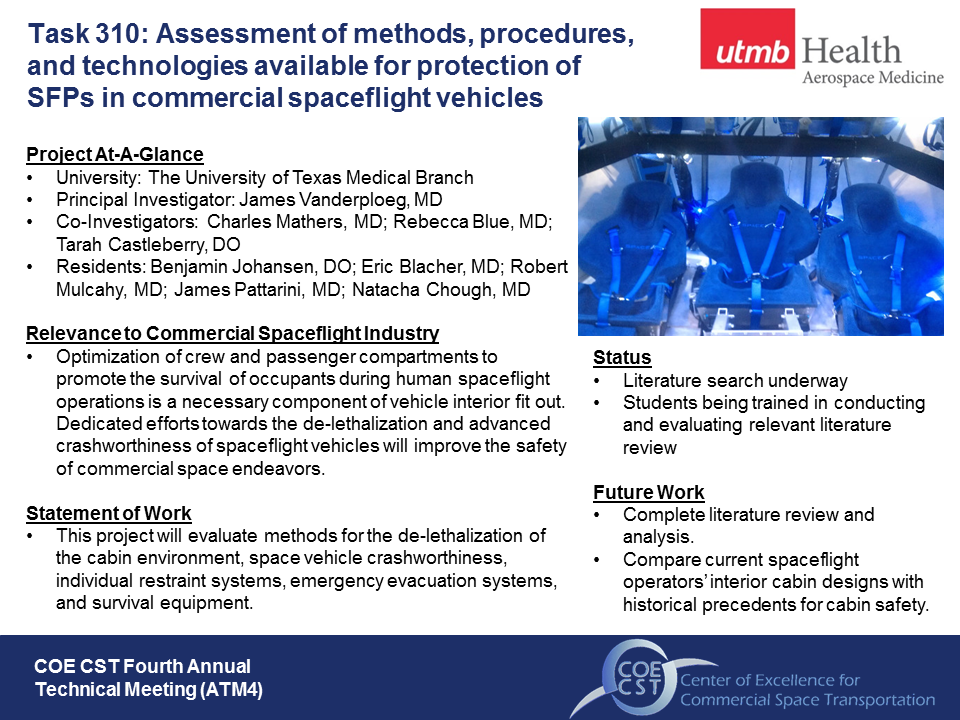310. Reducing Cabin Lethality in Commercial Spacecraft
Team
| Name | Role | Primary |
| Tarah Castleberry | Principal Investigator | ● |
| James Vanderploeg | Principal Investigator | |
| Henry Lampazzi | Tech Monitor | ● |
| Glenita Segura | Fiscal Admin | ● |
| Jim Vanderploeg | Fiscal Admin | ● |
| Ramona Carpenter | Fiscal Admin | |
| Mike Clark | Fiscal Admin | |
| Tara McElroy | Fiscal Admin | |
| Sharon Nguyen | Fiscal Admin |
Project Description
We propose to continue a study to evaluate the methods, procedures, and technologies available for the protection of crew-occupied space in commercial spaceflight vehicles to identify recommendations for safety in both nominal and contingency manned aerospace vehicle operations. This includes a review of methods for the de-lethalization of the cabin environment, space vehicle
crashworthiness, individual restraint systems, emergency evacuation systems, survival equipment, and related objectives. The review will include an analysis of historical vehicle capabilities and standards as well as a discussion of likely cabin configurations of the various commercial vehicles currently in development. Further, development of a systematic protocol designed to establish best practices
towards the evaluation of a space vehicle airframe for any lapses in safety design for primary mishap prevention, as well as appropriate aeromedical response plans to be utilized in the case of an aerospace mishap, will be undertaken. The ultimate objective would be to provide a detailed summary of minimal standards that a crew cabin should meet to be considered safe for occupants in nominal and contingency spaceflight operations and the establishment of a detailed plan for mishap aeromedical response.
Project Outcomes
(1) a final report that will be completed by the end of the study, detailing the results of the literature review, the review of current technologies, and recommendations
regarding minimum safety standards and
(2) the findings will also be submitted for presentation at the annual scientific meeting of the Aerospace Medical Association (AsMA) to be held in May 2016. The final report may also be prepared for submission for publication in Aerospace Medicine and Human Performance – the journal of the AsMA.
Summary of Output
We propose a study to evaluate the methods, procedures, and technologies available for the protection of crew-occupied space in commercial spaceflight vehicles to identify recommendations for safety in both nominal and contingency manned aerospace vehicle operations. This includes a review of methods for the de-lethalization of the cabin environment, space vehicle crashworthiness, individual restraint systems, emergency evacuation systems, survival equipment, and related objectives. The review will include an analysis of historical vehicle capabilities and standards as well as a discussion of likely cabin configurations of the various commercial vehicles currently in development. The ultimate objective would be to provide a detailed summary of minimal standards that a crew cabin should meet to be considered safe for occupants in nominal and contingency spaceflight operations.
Quad Chart
